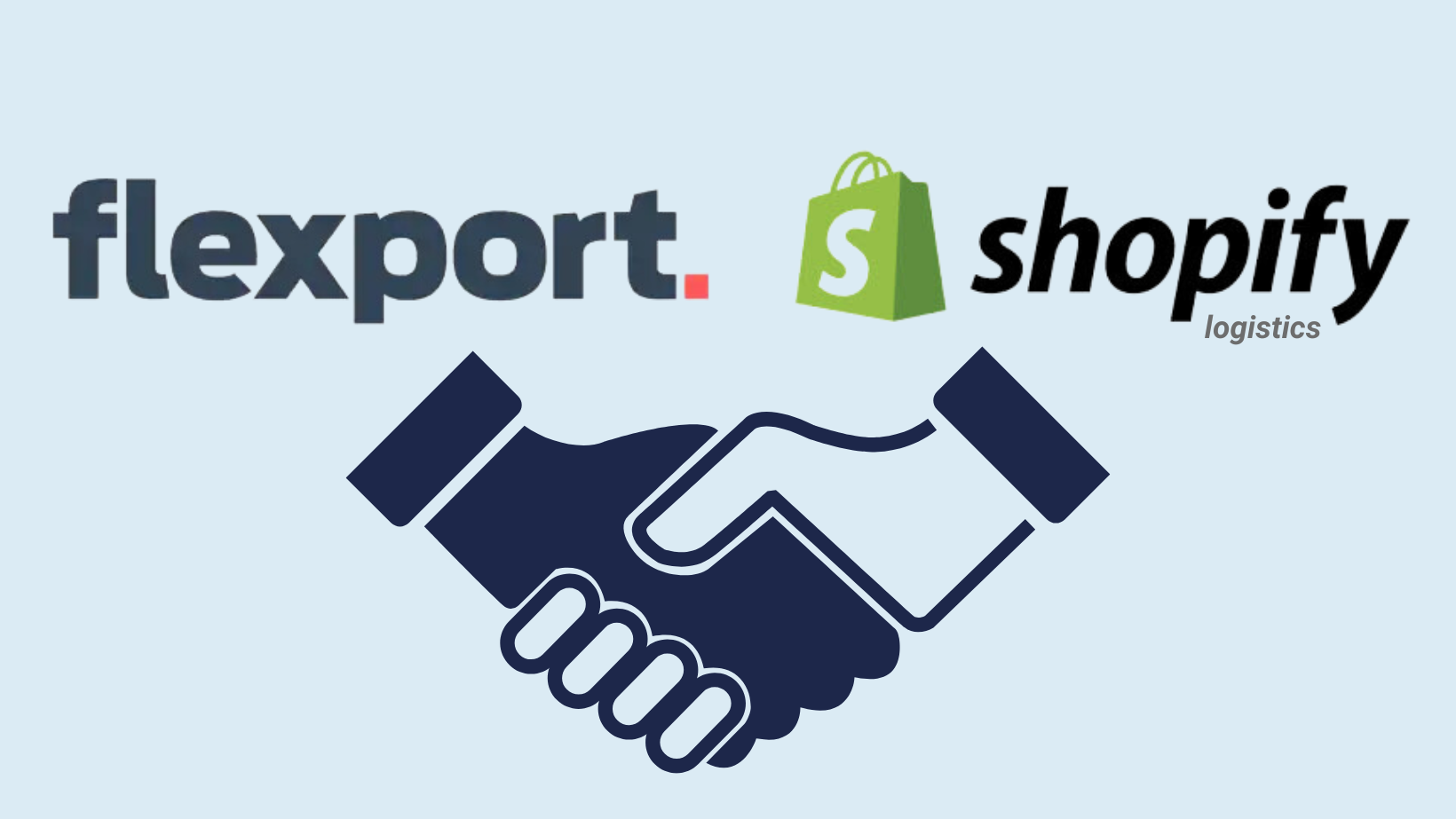After years of investing billions of dollars into its own logistics, Shopify has decided it’s time to hand over the reins. Last month, the mega e-commerce platform sold the majority of its logistics operations to key partner, Flexport.
This development is the latest in a series of e-commerce headlines that confirms two key trends for modern brands. First, omnichannel fulfillment is here to stay. Second, inventory and logistics is a lot harder than it looks.
In the future of commerce, the strength of your inventory and supply chain operations will be a key differentiator. Now that Shopify is streamlining omnichannel fulfillment for sellers both on and off the platform, let’s take a closer look at what this could mean for growing brands.
Why did Shopify sell its logistics division to Flexport?
Flexport is a leading e-commerce solution for global logistics and freight forwarding services. Last year, the company was number one on CNBC's Disruptor 50 List and secured a place as one of Fast Company's Most Innovative Companies.
The company is led by CEO Dave Clark, who spent more than two decades in various leadership positions at Amazon. During his tenure, he was credited as the engineer of Amazon’s transport and logistics network, including building out the systems that made one- and two-day Prime delivery possible.
Here are some of the key highlights from the acquisition:
- Flexport will now become the official logistics partner for Shopify and the preferred provider for Shop Promise.
- The exchange also includes Deliverr, a fulfillment service platform that provides two-day shipping on most marketplaces.
- Shopify will also receive stock in Flexport and the ability to name a director to the board.
- Shopify merchants will now have access to Flexport’s freight forwarding services, such as sending international shipments from suppliers to their warehouses.
Citing a desire to “sharpen our focus on our mission,” Shopify announced that despite having built its own “port to porch” logistics solution, including the acquisition of Deliverr for $2.1 billion barely a year ago, the company is now choosing to stay firmly in its lane.
“This allows Flexport to do what they do best, and allows Shopify to go back to doing what we do best, which is building incredible software for e-commerce,” said Shopify’s President Harley Finkelstein.
After what he described as a “side quest” into developing Shopify’s own fulfillment and logistics businesses, it became clear to Finkelstein and the leadership team at Shopify that supply chain challenges are best left to the pros. Shopify can now focus on its core business, while Flexport runs the entire supply chain process through last-mile delivery.
What does this mean for merchants on and off Shopify?
Flexport’s acquisition of Shopify Logistics is almost certainly a bid to gain market share as competition from Walmart and Amazon heats up. E-commerce pundits are still musing over just how influential the deal really is. Could Flexport be in a position to compete with Amazon FBA and Walmart Fulfillment Services one day?
According to Flexport, that’s not the goal.
“Amazon is a great company and a great product for sellers, but we’re also going to do fulfillment to your store, so we can replenish your physical stores, we can ship to your e-commerce site as well,” said Clark in an interview with Fox Business.
While Clark has explained that this development is meant to complement, not compete, with Amazon FBA, Flexport does deliver a similar one-stop shop for merchants — including those who sell via eBay, Amazon and Walmart — to keep inventory replenished. With Shopify Logistics integrated, merchants will be able to use Flexport for last-mile and fulfillment services across channels.
“Think of us as the logistics department for all of these merchants,” said Parisa Sadrzadeh, Flexport senior vice president of SMB Product and Technology. “This acquisition really helps us solve these problems in a much bigger way for small merchants.”
What are the opportunities for multichannel brands?
In his note to the Flexport team, Clark cited a central goal to level the playing field for small businesses. With brands of every size and shape now having access to streamlined fulfillment through Shopify Logistics, merchants both on and off the platform will need to make their operations more agile than ever.
Beyond the battle for third-party sellers, this deal is indicative of a broader and more impactful trend — the rise of omnichannel fulfillment. In some ways, Shopify and Flexport are confirming what many merchants already know:
Consumers want to shop whenever they want, wherever they want.
But inventory planning for one channel is tricky enough. Streamlining replenishment across multiple locations? That’s a task that feels impossible for many growing brands.
Yet the rise of omnichannel fulfillment also brings huge opportunities for merchants that have a clear strategy for inventory optimization. No matter where you sell, you need to be able to deliver the right products in the right quantities to the right place and at the right time.
This latest move from Flexport marks an acceleration in the shift toward omnichannel retail.
“The big difference between what we’re going to offer, and an Amazon or maybe a Walmart logistics or some of the other places offer, is this isn’t just for one system or store or platform,” said Clark. “We have very much the same vision that Shopify has. We’re just about the success of the merchant and our customers, and we don’t care if they sell in their stores or on Amazon or on Walmart.”
By embracing a marketplace-agnostic approach to inventory replenishment, Shopify and Flexport are helping brands minimize the complexities of omnichannel selling, protect margins as they grow, and continue to scale their brand — even if that means selling outside of Shopify’s platform.
The question is, do brands have the inventory planning capabilities needed to maximize these opportunities?
A unified approach to omnichannel inventory is now a must
As more brands take advantage of streamlined fulfillment, managing each sales channel and inventory location manually will become less and less sustainable.
Attempts to manually forecast your demand and replenishment (or worse, “wing it” with a siloed solution that doesn’t integrate with your other sales channels) can lead to stockouts, overstocks, and lost revenue across the business.
Moving forward, successful brands will embrace a streamlined inventory and supply chain process including:
- Omnichannel sales insights: With historical and current sales data from each channel, plus corrections for market changes and outliers such as stockouts and peak shopping events.
- Unified forecasts: Accurate forecasting in one centralized location to simplify communications and unify teams.
- Complete visibility: Knowing what’s happening at every node of your supply chain, with real-time insights to make changes when needed.
No matter what your fulfillment network looks like, you’ll need to have full visibility and control if you want to compete in an increasingly omnichannel environment.
With the right inventory optimization platform, you can streamline your operations across multiple sales channels and inventory locations and get a clearer window into your entire end-to-end supply chain.
Simplify omnichannel with Flieber
Experts predict that in the near future, a focused omnichannel strategy will no longer be the bleeding edge, it will be a “requirement for survival” in the world of retail. But for growing brands, that’s easier said than done.
At Flieber, we believe you should have full control over your data to make more accurate decisions in a fraction of the time.
Flieber brings your sales, inventory, and supply chain data together no matter where you sell — and gives you complete control over critical business decisions. Our deep integration with Deliverr keeps you up-to-date on stock movements, with instant inventory level updates so you can make the best inventory decisions.
Learn more about our integrations or request access today to see how Flieber works.



-1.png)

